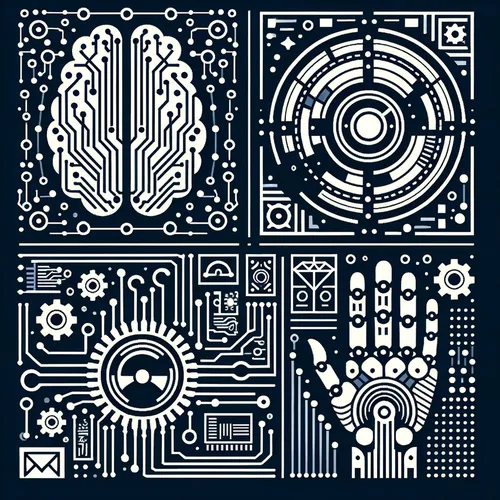AI & Robots Converge: Billion-Dollar Boom, Workforce Woes, and a Quantum Leap!
- Author
- Quiet. Please
- Published
- Wed 20 Aug 2025
- Episode Link
- https://www.spreaker.com/episode/ai-robots-converge-billion-dollar-boom-workforce-woes-and-a-quantum-leap--67451657
This is you Emerging Technology Trends: AI, Robotics & Digital Innovation podcast.
AI, robotics, and digital innovation are on a transformative trajectory, reshaping industries in 2025 through accelerated breakthroughs and cross-sector convergence. Leading this revolution, artificial intelligence is now deeply embedded across robotics, powering rapid advances in autonomy, sensor integration, and real-time data-driven decision-making. The global advanced robotics market is forecast to surge from nearly 54 billion dollars in 2025 to 280 billion by 2034, reflecting over twenty percent compound annual growth, while the AI-robotics sector itself has already notched a nearly twenty-nine percent annual growth rate and now employs more than 69 thousand professionals worldwide, according to Precedence Research and StartUs Insights.
A major trend is the emergence of adaptive robots capable of thriving in complex, unstructured environments. This year, robotics has reached an inflection point: AI-equipped machines have left static, controlled factory lines and are now revolutionizing fields like healthcare, agriculture, and construction. Siemens and Intuitive Surgical are showcasing robotics that assist in precision manufacturing and surgery, confirming predictions from Future Today Strategy Group that autonomous robotics will slash automation costs by up to ninety percent and open new domains of human-robot collaboration. These “cobots” are transforming productivity and safety on shop floors while simultaneously reducing the time and expense of traditional worker training.
Investment is surging as new patents fuel a global race. The United States, China, and Japan remain hotbeds for intellectual property, with China now leading in patent filings. The robotics market as a whole is on track to more than double to 150 billion dollars by 2030, with industrial applications in automotive and logistics paving the way. Meanwhile, generative AI breakthroughs have rapidly blurred distinctions between software-driven services and physical automation, enabling robots to learn from new experiences and tackle intricate, previously “safe” jobs across sectors.
Yet these advances bring regulatory and ethical challenges to the fore. Governments and companies are now pressed to implement targeted policies, especially as concerns mount about workforce displacement, the need for upskilling, and privacy implications of pervasive sensors and predictive analytics. Integration hurdles remain significant, especially for those attempting to retrofit legacy systems, but the most successful early adopters are deploying hybrid human-robot teams that preserve the unique value of both.
Among the week’s standout news: UiPath announced a major investment in process automation platforms for government services; a new partnership between Serve Robotics and healthcare providers aims to deliver prescriptions autonomously; and quantum computing pioneer D-Wave unveiled a quantum-classical hybrid system optimized for industrial supply chains.
For practical action, listeners are encouraged to evaluate automation strategies with an eye toward augmenting—not replacing—the workforce, to pursue partnerships that bridge technology silos, and to prioritize transparency as AI becomes inseparable from core business operations.
Looking ahead, the intertwining of AI, robotics, quantum computing, blockchain, and internet of things ecosystems will continue to accelerate, promising exponential productivity gains and more human-centric designs. However, ongoing investment in both technological infrastructure and ethical frameworks is crucial to ensure an inclusive, sustainable future.
Thanks for tuning in and be sure to come back next week for more. This has been a Quiet Please production and for me check out Quiet Please Dot A I.
For more
